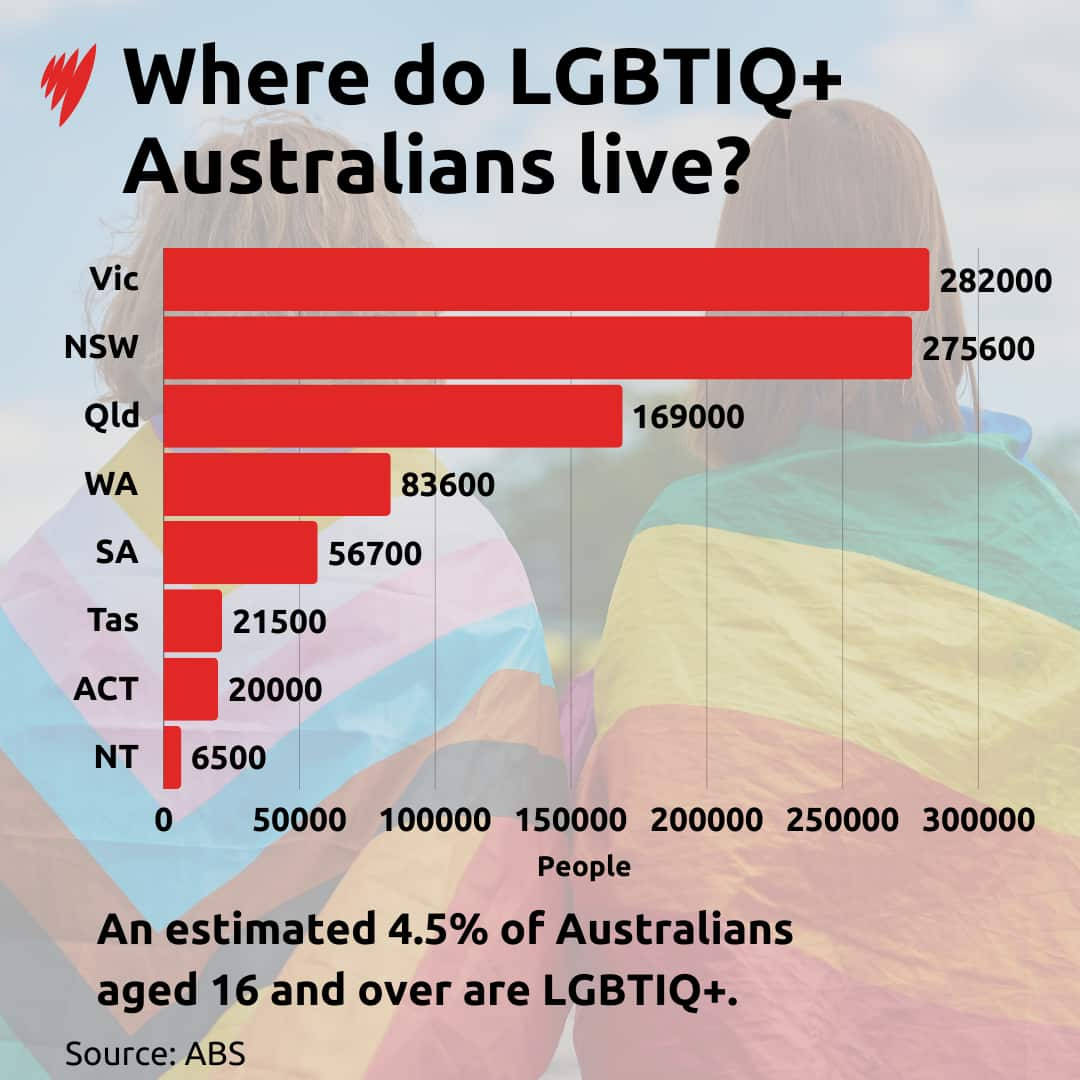Around 4.5 per cent of Australians are members of the LGBTIQ+ community, according to first-of-their-kind estimates from the nation’s statistics agency.
The Australian Bureau of Statistics (ABS) combined data from almost 45,000 people who responded to one of four of its recent health surveys in 2022 to work out how many people identify as LGBTIQ+.
It found that an estimated 910,600 people in Australia aged 16 and over are LGBTIQ+.
Around 740,000 (80.9 per cent) are lesbian, gay, bisexual, or use a different term to describe their sexual orientation.
Approximately 178,900 (20.1 per cent) are transgender and gender diverse, while about 63,300 (7 per cent) reported being born with variations of sex characteristics.
Which age group is more likely to be LGBTIQ+?
Perhaps unsurprisingly, younger Australians are more likely than older Australians to identify as LGBTIQ+.
Some 9.5 per cent of 16 to 24-year-olds are LGBTIQ+ — more than 900,000 people.
Comparatively, just 1.4 per cent of Australians aged 75 and over are LGBTIQ+.
Older Australians are less likely to identify as members of the LGBTIQ+ community than younger Australians. Source: SBS News
Where do LGBTIQ+ Australians live?
NSW may be home to , but the highest number of LGBTIQ+ Australians actually live in Victoria.
Some 282,000 of Victoria’s residents are members of the LGBTIQ+ community — more than any other Australian jurisdiction.
Per capita, however, the ACT takes the top spot, with 5.7 per cent of its population identifying as LGBTIQ+.
Just 3.4 per cent of Western Australians are LGBTIQ+ — the smallest proportion of any state or territory.
Victoria is home to the highest number of LGBTIQ+ Australians. Source: SBS News
LGBTIQ+ Australians to be included in 2026 Census
The ABS said while the estimates and characteristics in its analysis were not population benchmarks, they could be used to help inform decision-making for LGBTIQ+ populations.
It also noted Australia’s figures were “very similar” to the 2023 New Zealand Census data.
That found 3.6 per cent of New Zealanders identify as lesbian, gay, bisexual, or use a different term to describe their sexual orientation — the same proportion as Australia.
Around 0.6 per cent of New Zealanders are transgender and gender diverse,
slightly below the Australian figure of 0.9 per cent.
Earlier this year, the federal government faced weeks of criticism over .
The move — which the government stated was
— drew swift condemnation from LGBTIQ+ groups and advocates, experts, and some MPs, including from within the Labor Party.
The government later backflipped, announcing the 2026 Census would include questions on gender and sexual orientation for people aged 16 years and over.
Questions about people born with variations of sex characteristics, however, will not be included.


